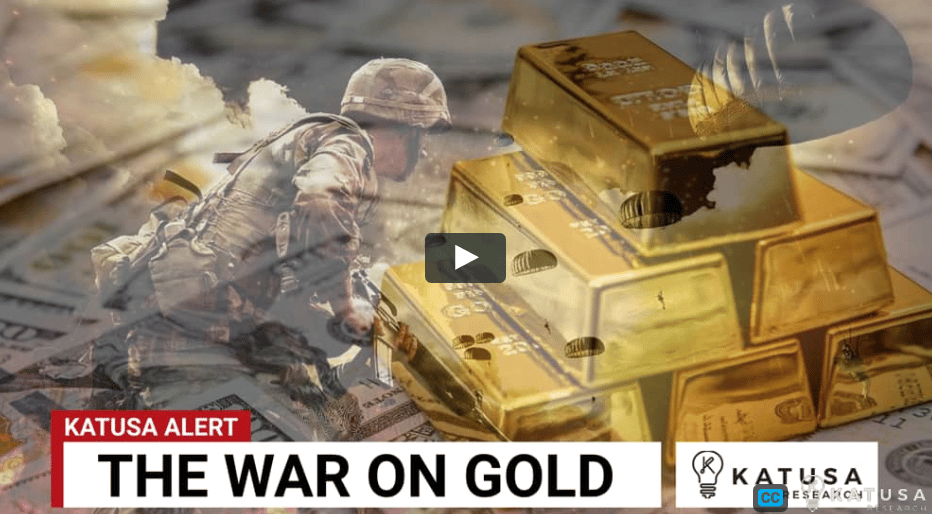Tom Dyson co-founded Palm Beach Research Group with Mark Ford back in 2011. Tom always says that you have to be passionate about what you believe in. And Tom practices what he preaches. When he’s committed to an idea, he’s all in.
And that’s why on Wednesday, May 20, Tom’s holding a special briefing to announce the single-biggest moneymaking event he believes we’ll see over the next 20 years.
Tom’s so confident about this trade that he’s put $1 million of his own money on the line. You can find out all the details right here…
In the meantime, we hand the reins over to Tom today. In his essay below, he explains why he’s “all in” on his favorite asset…
By Tom Dyson, editor, Postcards From the Fringe
The one truth about speculation: The stock market is manic-depressive. It swings from oversold to overvalued every generation or so.
The simplest market-timing system, therefore, is to be a contrarian.
That means buying stocks when everyone else is selling… and selling stocks when everyone else is buying.
In my case, selling stocks also means waiting on the sidelines in gold. More below…
— RECOMMENDED —
You Could Make 843% in Your Sleep From 24-Hour Trades
You could have massive overnight gains throughout this entire crisis.
“Blitz Tracker” shrinks your exposure by controlling your time spent in the market and regularly delivers powerful 24-hour gains.
Click HERE now to see how to join folks already making money during this market chaos
Table of Contents
Our Contrarian Idea in Action
I first understood this idea at school, studying the Crash of ’29 and the Great Depression in history class.
I was just getting interested in investing. I bought my first stock at age 11, and it’s been my “guiding star” ever since.
The chart below shows that contrarian idea. It tracks the P/E ratio of the U.S. stock market going back 120 years.
(The P/E – or price-to-earnings – ratio measures how much investors are paying for every $1 of a company’s earnings.)

You don’t need to understand everything that’s going on in this chart.
Just notice how valuations have oscillated around the mean (the horizontal black line). They’ve been moving between overbought and oversold.
And notice the towering peak in 1999.
— RECOMMENDED —
New Morning Routine Could Change Your Life
If you’re available around 9:30 in the mornings, then I think you’ll love this new morning routine.
Tim Sykes tried it and he’s made $1,150… $1,672… and even up to $3,508… all in less than 30 minutes.
Well, Sykes is going to reveal all the details of this new way of making money during the 9:30 Profit Summit Wednesday, on May 27 at 8pm EST.
Just click here to claim your spot – FREE of charge.
It was with this perspective that I watched the tech-stock mania and the bursting of the bubble in 2000.
The internet and technology had caught the public’s imagination.
Taxi drivers were recommending stocks. Grandmothers were forming investment clubs. And the press was talking about a “new era” in which stocks would never fall again…
“This is straight out of the textbooks,” I thought at the time. “A classic mania.”
I didn’t have any money to invest back then. I had just graduated from university.
But I did have the insight that this moment would positively, absolutely mark the beginning of a new market cycle… that gold would outperform stocks… and that valuations had begun their long walk down the mountain.
— RECOMMENDED —
THE WAR ON GOLD 2020: Emergency Briefing
Hedge Fund manager and New York Times Bestselling Author details how you position your gold stock portfolio right now will have a huge impact on your wealth in the coming gold bull market.
Watch The Emergency Briefing Now
Simple Prescription
That was 20 years ago. Since then, gold has outperformed stocks by about 5-to-1. And I’ve been bearish on stock market valuations the whole time. I’ll continue to be bearish on them until we reach the cycle trough.
If my hypothesis is correct, the prescription is simple: own gold, sell stocks.
When we reach the cycle trough, it’ll be time to sell gold and buy stocks. But that’s still years away. For now, gold is the place to be. Stocks are the place NOT to be.
But how do we know when we’ve reached the cycle trough? For that, I follow the Dow-to-Gold ratio.
It tracks the Dow Jones stocks as priced in gold. And it tells us the best times to buy gold, and the best time to buy stocks.
You buy stocks when they are cheap relative to gold. That is, when the Dow-to-Gold ratio is below 5.
You sell stocks when they become expensive – when the Dow-to-Gold ratio rises above 15. At that point, you sit in gold until stocks become cheap again (in gold terms).
When the valuations bear market began in 1999, the Dow-to-Gold ratio reached 41. It’ll be below 5 when the valuations bear market is over… which I expect will happen sometime in the next five to 10 years.
The Dow-to-Gold ratio is at 14 today.
— RECOMMENDED —
The Wall Street Legend Who Picked Apple in 2003 and Bitcoin in 2016 – Shares #1 Pick for the 2020s

It’s not 5G, artificial intelligence, or the internet of things.
The answer will surprise you. And, for those who take early action, it could lead to an eventual $1.6 million payout.
I went “all in” on gold two years ago, as a way to keep our wealth safe while we wait for the Dow-to-Gold ratio to fall. In fact, I invested nearly $1 million of my own money into this strategy. But there’s more to it than just buying bullion…
On Wednesday, May 20, I’m sharing the details of my strategy in a special briefing. It’s something many of you have asked for since I first started publishing these Postcards.
To make sure you don’t miss it, reserve your spot right here.


